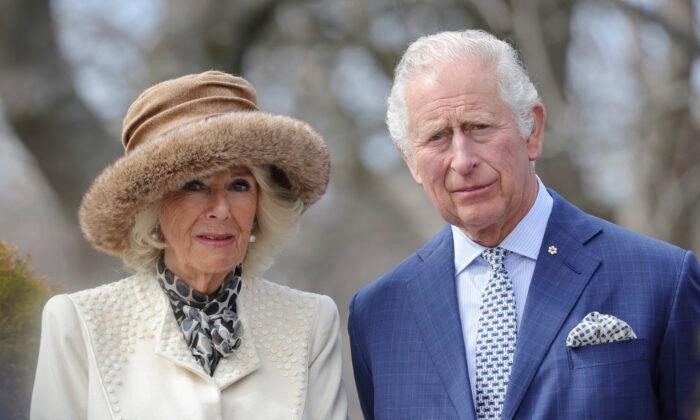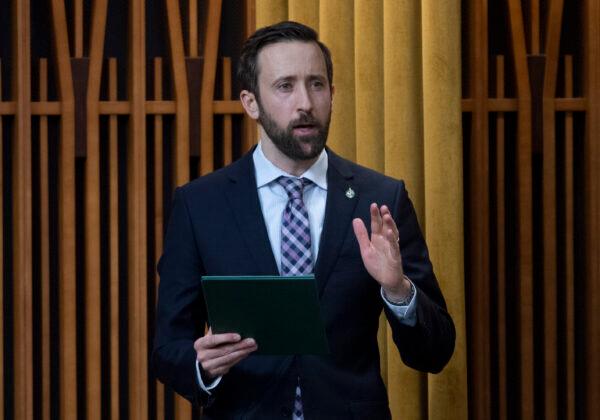Allegations by the Conservatives that the Liberals are partial to appointing liberal-minded judges may come as no surprise to observers of Canada’s judicial system and the course it has taken.
But the politicization of the courts is not only limited to the Liberals—notwithstanding the alleged extent of the practice levelled against the current government.
Bruce Pardy, a law professor at Queen’s University, tells The Epoch Times that “there is a tendency for governments, not just the Liberals, to favour their own for judicial appointments.”
It may even have become accepted, as evidenced in a comment by Howard Anglin, a former senior adviser to Stephen Harper. He recently sent a missive on Twitter in response to new Conservative Party data showing the Liberals appointed far more judges who have been donors to the Liberal Party than donors for other parties.
“Leave it alone, CPC,” Anglin wrote. “Do you not think you will ever be in government again?”
New data released by the Tories suggest that since the Liberals were elected in 2015, about 28 percent of appointments to or promotions in federal courts have gone to those who donated only to the Liberals in the past, according to the National Post. In contrast, only 4 percent and 1 percent have gone to people who solely donated to the Conservatives and the NDP respectively.
The crux of the Conservatives’ complaint was that this contradicts Prime Minister Justin Trudeau’s claim that his government would adhere to a merit-based process for judicial appointments and promotions.
Pardy says, however, that political preference can also play a part when appointing judges based on merit.
“Partisan court appointments are not desirable, but attempts to establish merit-based appointments usually turn out to be a mirage, partly because what constitutes ‘merit’ is tinged with political preferences.”
Troy Riddell, a professor of political science at the University of Guelph and an expert on judicial appointments, says that “not an insignificant number of judicial appointments do have connections to the party in power.”
“The fact that both Liberals and Conservatives disproportionately favour individuals who have supported their party when appointees are found to have political connections raises a number of potential issues, including the fairness of the process and whether the very best individuals are being appointed,” he said in an interview.
“Patronage issues might also dampen applications from good candidates and/or a more diverse set of candidates.”
William Gairdner, an academic and author of the best-selling book “The Trouble With Canada,” says the politicization of the court can be attributed to the inclusion of the Charter of Rights and Freedoms in the Constitution in April 1982. This has led to an increased focus on the court and raised the stakes of court decisions and appointments, he explains, since parliamentarians have suppressed their own independent judgment as legislators out of fear of the judiciary and its rulings.
“Parliamentarians are now so fettered by the threat of potential Charter scrutiny that they routinely defer to past judicial decisions, or to Charter rulings they suspect may be anticipated, prior to creating new legislation,” he says.
“The emphasis since 1982 has shifted from the question of what laws the people wish to make via their elected representatives, to the question of what laws unelected judges, who represent no one, will allow them to make.”
Originalism vs ‘Living Tree’
The living tree doctrine is a legal approach, usually aligned with progressivism, that interprets the Constitution as a flexible document that must comply with the norms and values of the time. Originalism, on the other hand, seeks to interpret the Constitution based on what can be deemed the original meaning of the document when it was written.
Gairdner says the Charter’s transfer of the “ultimate authority over the intent, meaning, and import of Canadian laws” from parliamentarians to unelected Supreme Court judges has enabled many of those tasked with interpreting the law to adhere to the living tree concept.
The living tree approach and a politicized court are connected, and is one reason why the court remains so polarizing, according to Pardy.
“If anything, our laws, our courts, and our law schools are becoming ever more ‘progressive’ over time, and that includes embracing the ‘living tree’ approach to constitutional interpretation,” he said.
“Textual interpretation, including originalism, is not dead in Canada, as some of our most talented and principled judges take a textualist approach. But they are a distinct minority.”
The originalist approach to constitutional interpretation has a stronger presence in the United States, with its most notable practitioners being the late Antonin Scalia and now current justices Neil Gorsuch, Amy Coney Barrett, and Brett Kavanaugh.
In Canada, in contrast, the living tree doctrine is much more prevalent as a school of thought and originalism doesn’t have as much clout, although there are exceptions.
A recent case that brought the concept of originalism versus living tree to the fore was when Justice Grant Huscroft made a dissenting decision on the Ontario Court of Appeal’s 2019 federal carbon tax ruling. Huscroft argued that the federal government was asking the court to “sanction a change to the constitutional order” that would increase the lawmaking authority of Parliament at the expense of provincial legislatures.
Appointed to the Ontario Court of Appeal in 2014, Huscroft is one of the few originalist judges in Canada. He opposes the idea of engaging in activism from the bench, saying judges “have no greater insights than the people when it comes to debating the important moral and social issues of the day.”
One of the cases often cited as an example of how the living tree philosophy clashes with a textual interpretation is that of Trinity Western University, a private Christian college in Langley, B.C.
In June 2018, the Supreme Court presided over a dispute between Trinity Western and the law societies in Ontario and British Columbia over their refusal to accredit the university’s law school due to its “community covenant” that reaffirms heterosexual marriage. Trinity Western argued that this violated its right of religious freedom, but a 7–2 majority ruled that it was “proportionate and reasonable” to impose limits on religious rights so that there would be no barrier to LGBTQ students who don’t share the school’s beliefs.
As a counterweight to the living tree doctrine, Gairdner has long proposed creating an institution that would promote a more traditional, originalist approach to the role of the judiciary in a parliamentary system.
“For a couple decades, I have tried without success to get various parties interested in an entity I call CourtWatch Canada,” he says.
While promoting a traditionalist perspective through its commentary, the entity would seek to “hover over” the judges and monitor important cases and evaluate judges’ ability to “adhere to a high professional standard of law.”
An entity like CourtWatch would aspire to serve a similar function to the Federalist Society in the United States, a legal organization that promotes textualism and originalism and seeks out potential justices who adhere to them, thereby buttressing the influence of originalism.
“CourtWatch Canada will attempt to restore respect for the rule of law nationally through observance and promotion of original intent in lawmaking and interpretation,” says a draft of Gairdner’s proposal.
“The objective will be to create a new awareness by Canada’s judges that judicial forays into personal ideological interpretation may be expected to draw sharp reaction and correction from respected independent legal experts at CourtWatch Canada.”





